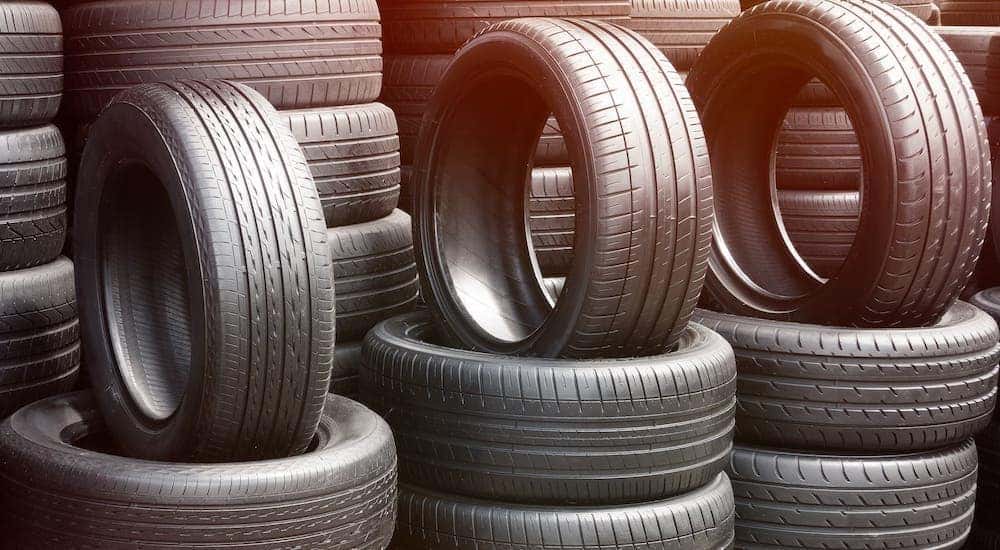Tire Solution: Understanding Tire Stress Tracking Equipments
Understanding Tire Pressure Tracking Solutions (TPMS) is a crucial aspect of preserving ideal lorry performance and safety on the road. With developments in automobile innovation, TPMS has ended up being a common function in contemporary automobiles, giving real-time details on tire pressure degrees.

Importance of TPMS
The significance of Tire Stress Surveillance Equipments (TPMS) depends on their ability to enhance car safety and performance through real-time monitoring of tire pressure levels. Keeping the proper tire stress is essential for making certain optimal handling, braking, and general security of an automobile. TPMS gives drivers with immediate feedback on any underinflated or overinflated tires, permitting timely modifications to be made.
Parts of TPMS
Consisting of numerous vital components, a Tire Stress Tracking System (TPMS) functions as an innovative safety function in contemporary lorries. The main components of a TPMS include sensing units, a control component, and a caution indicator. Sensors are usually situated in the tire valve stem or affixed to the wheel assembly, where they measure tire stress and transmit information to the control module. If it detects considerably low stress in any of the tires, the control module processes this info and causes a caution. The caution indicator, commonly a symbol on the control panel, signals the vehicle driver to examine the damaged tire or tires. Some advanced TPMS models also display the actual tire pressure readings for every tire, supplying vehicle drivers with real-time information to make sure optimal tire performance and security. By checking tire pressure continuously, TPMS helps avoid accidents, decreases tire wear, and improves gas performance, making it an essential component for lorry safety and security and performance.
Kinds of TPMS

On the various other hand, indirect TPMS depends on the vehicle's wheel rate sensing units to check tire pressure. This system detects underinflation by contrasting the rotational speeds of the wheels. see this site Indirect TPMS is much less pricey than direct TPMS, as it makes use of existing sensors within the lorry.
While direct TPMS uses a lot more precise analyses, indirect TPMS is easier in layout and generally needs less maintenance. Both systems have their advantages and limitations, and the choice between them frequently depends upon elements such as expense, car make, and personal preference. Comprehending the distinctions between these two types of TPMS can assist lorry proprietors make informed choices regarding tire maintenance and security.
TPMS Upkeep Tips
Conduct routine checks on the tire stress degrees and compare them with the TPMS analyses to ensure they are consistent. During tire turning or substitute, make certain that the TPMS components are managed meticulously to avoid any type of possible damage. If the TPMS cautioning light brightens on the dashboard, attend to the concern promptly by inspecting the tire stress and the total system for any faults.
Advantages of Proper Tire Stress
Preserving proper tire stress, as emphasized in TPMS Maintenance Tips, is vital for reaping the numerous advantages related to optimal tire stress levels. Among the primary benefits of maintaining the proper tire pressure is boosted gas effectiveness. When tires are properly blown up, there is less moving resistance, resulting in better gas economic situation. Additionally, proper tire pressure makes sure even tire wear, extending the life-span of the tires and advertising much safer driving problems. With the appropriate tire stress, automobiles likewise have better handling and grip, specifically in negative climate condition. This can enhance total driving efficiency and security for the motorist and travelers. Preserving optimum tire stress can add to a smoother and more comfortable trip by minimizing vibrations and noise created by underinflated tires. To conclude, the advantages of proper tire stress go past just tire longevity; they include enhanced gas efficiency, boosted safety, read more far better car efficiency, and overall driving comfort.
Verdict
Finally, recognizing tire pressure tracking systems (TPMS) is crucial for preserving optimal tire pressure and ensuring automobile safety. By acknowledging the significance of TPMS, recognizing with its parts, knowing the various kinds readily available, sticking to appropriate maintenance suggestions, and recognizing the benefits of preserving proper tire pressure, chauffeurs can improve their driving get redirected here experience and extend the life expectancy of their tires. Appropriate tire stress is crucial to secure and reliable car operation.

 Jonathan Taylor Thomas Then & Now!
Jonathan Taylor Thomas Then & Now! Angus T. Jones Then & Now!
Angus T. Jones Then & Now! Tatyana Ali Then & Now!
Tatyana Ali Then & Now! Marcus Jordan Then & Now!
Marcus Jordan Then & Now! Mary Beth McDonough Then & Now!
Mary Beth McDonough Then & Now!